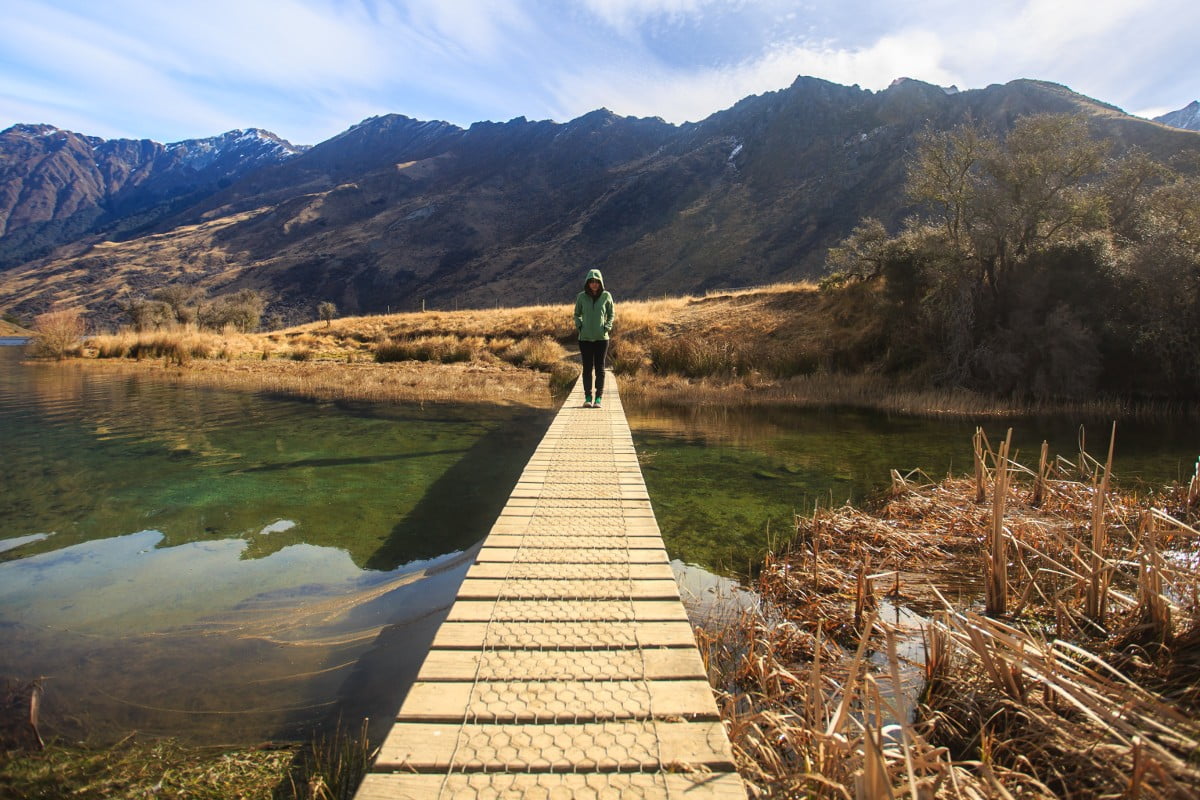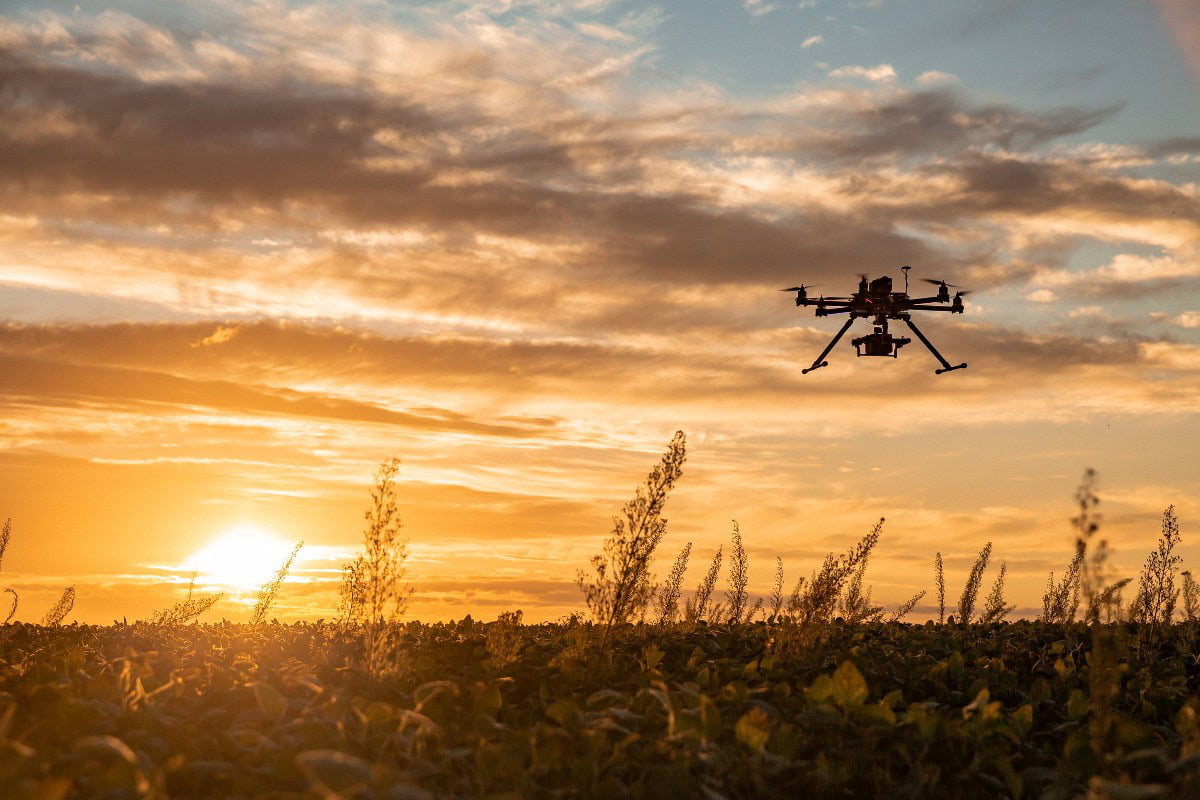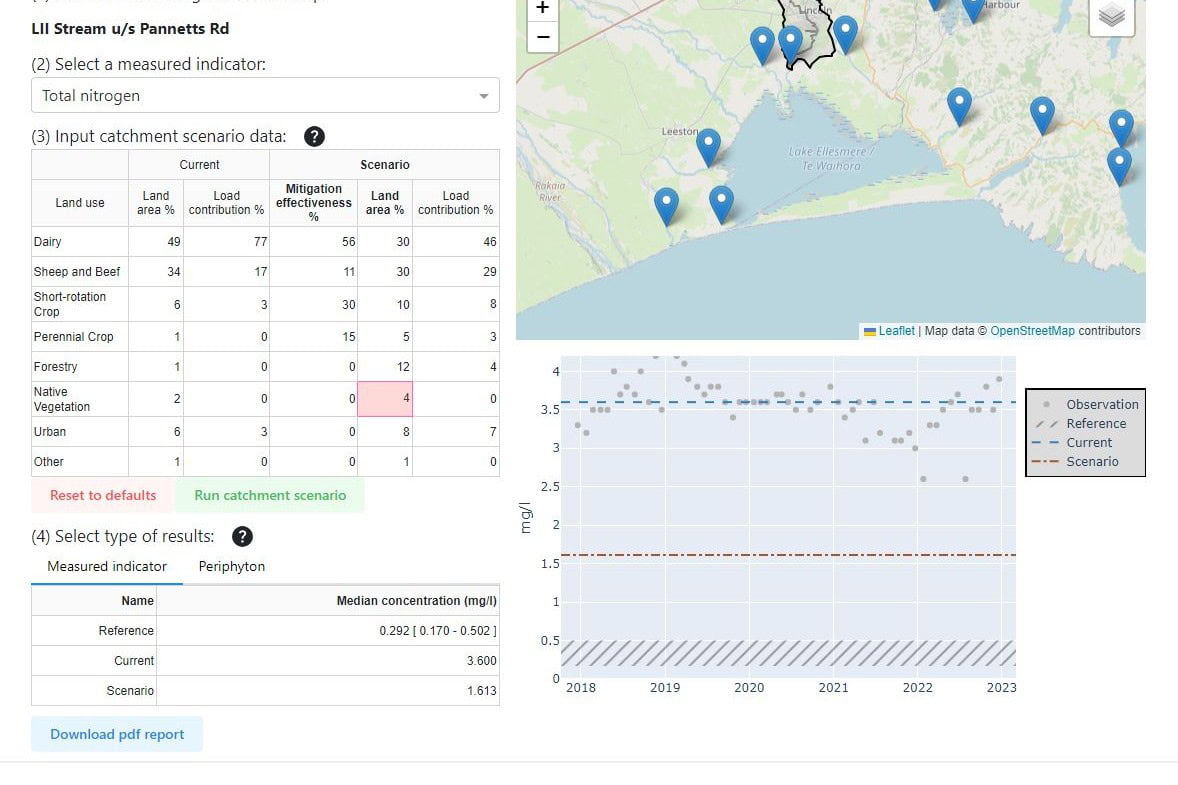August 30, 2024
-
- About UsMā mātou
- Our ScienceTe pūtaiao
- Future Landscapes Ngā Horanuku AnamataIn the future, landscapes will contain mosaics of land use that are more resilient, healthy and prosperous than today.
- Assessing Contaminants with Stream Order
- Benign Denitrification in Groundwaters
- Cascade of Soil Erosion
- Connecting Soil and Water Quality
- Crop Disease Under Climate Change
- Faecal Source Tracking
- Healthy Estuaries
- Innovative Agricultural Microbiomes
- Interoperable Modelling
- Land Use for Nutritious Diets
- Land Use Opportunities
- Land Use Suitability
- Linking Legacies to Wai
- Mapping Freshwater Contaminants
- Matarau: Empowering Māori Landowners in Land Use Decisions
- Measuring Denitrification
- Monitoring Freshwater Improvement Actions
- Mosaic vs Monoculture Landscapes
- Next Generation Systems
- Pasture for Humans
- Peri-Urban Potential
- Phosphorus Best Practice
- Physiographic Environments of New Zealand
- Pohewa Pae Tawhiti
- Protein Future Scenarios
- Silvopastoral Systems
- Sources and Flows
- Visualising Forestry Harvesting Cycles
- Incentives for Change Ngā Poapoa PanoniWe want to reward New Zealand’s primary producers for producing high-value products in sustainable ways.
- Aotearoa Food Cultures
- Appropriate Use of Taonga Species
- Credence Attributes On Farm
- Early Māori Agricultural Entrepreneurship
- EU Green Deal: Impact on NZ Exports
- Eutrophication Product Footprinting
- Impact of Imported Feed Shortages
- Incentives for Data Sharing
- Indicators Working Group
- Integrating Value Chains
- Kaitiaki Intelligence Platforms
- Kuaha Matihiko: Digital Gateway
- Measuring Full Impacts of Land-Use Change
- New Models of Collective Responsibility
- Options for Rural Investment
- Reasons for Water Quality Improvement
- Regenerative Agriculture
- Register of Land Management Actions
- Rewarding Sustainable Practices
- Signals for Land Stewards
- The Matrix of Drivers
- Workforce Implications of Land-Use Change
- Pathways to Transition Ngā Ara WhakawhitiWe are growing understanding of what it takes to transition to resilient, healthy and prosperous futures, and are developing tools to help.
- Connecting Food Producers & Consumers
- Diverse Experiences of Farming
- Enhancing Assurance Schemes
- Future Scenarios for Arable Agriculture
- Implementing Te Mana o Te Wai
- Land-Use Scenarios for Nikau Farm
- Lessons from Our Land and Water
- Mauri Whenua Ora
- Ngā Tai-o-Rongo
- Predicting Agricultural Research Adoption
- Retiring Farmland into Ngahere
- Revitalise Te Taiao
- Rural Professionals Fund 2020–21
- Rural Professionals Fund 2021–22
- Rural Professionals Fund 2022–23
- Rural Professionals Fund 2023–24
- Science in Freshwater Policy Development
- Shared Vision for Land Use in Marlborough
- Storying Kaitiakitanga
- Synthesis Scenarios for Future Land Use
- The Collaboration Lab
- Trust and Social Licence
- Urban-Rural Partnerships for Equal Change
- Whenua Life Values
- Future Landscapes Ngā Horanuku AnamataIn the future, landscapes will contain mosaics of land use that are more resilient, healthy and prosperous than today.
- News + EventsHe pānui
- Resources Ngā rauemi
- View by topic
- Climate Change
- Collaboration
- E.coli
- Farm Environment Plans
- Farm Management
- Farming for Good
- Increasing Value
- Irrigation
- Land-Use Change
- Measuring Water Quality
- Mitigation
- Nitrogen
- NPS-FM
- Nutrient Management
- Phosphorus
- Regenerative Agriculture
- Sector Transformation
- Sediment
- Social Licence
- Te Ao Māori
- Te Mana o Te Wai
- Winter Grazing
- View by topic
- Outcomes Ngā puawaitanga
Resources related to
Sediment
Geoff Reid
You are here: Home Topics Sediment
Sediment is a natural part of our rivers, but too much sediment disrupts ecosystems and harms plants and fish. These resources can help you identify sources of sediment, understand how sediment moves through the landscape, and prevent soil loss.
Showing 1 - 12 of 66 results
Journal Article
Phosphorus applications adjusted to optimal crop yields can help sustain global phosphorus reserves
With the longevity of phosphorus reserves uncertain, distributing phosphorus to meet food production needs is a global challenge. Here we match plant-available soil Olsen phosphorus…
Summary
Visualisation Of Forestry Harvesting Cycles: Wairoa Catchment Case Study
The case study illustrates how the Forestry Catchment Planner app could assist various stakeholders in the forestry sector by offering detailed insights into land vulnerability…
Technical Report
From mountains to the sea: values and science for an informed kaitiaki/guardian – land
This project aimed to assess the impacts and implications of meeting contaminant reduction targets for estuaries on catchment land-use and management. The objectives were to:…
Guidance
Ki uta ki tai: mātāpono me te pūtaiao, ngā korero whakamahuki ma te kaitiaki – From mountains to the sea: values and science for an informed kaitiaki / guardian
Estuaries, located between land and sea, are diverse and productive ecosystems that provide a wide range of highly valued goods and services. The health of…
Guidance
Monitoring deposited fine sediment in rivers
Deposited fine sediment is the fine sand, silt or clay (less than 2mm wide) that settles on the bed of a river. It occurs naturally…
Guidance
Forestry Catchment Planner: User Guide
The User Guide provides a comprehensive overview of the Forestry Catchment Planner app‘s interface and key features. It helps users understand how to effectively navigate…
Interactive Tool
Forest Catchment Planner app
The Forestry Catchment Planner provides a comprehensive and intuitive platform for understanding plantation forestry harvesting cycles in a geospatial context within New Zealand’s vulnerable landscapes.…
Method
Forestry Catchment Planner documentation website
The documentation site for the Forestry Catchment Planner app is designed to provide users with clear, accessible information on the project’s methodology and data analysis.…
Summary
Ki uta ki tai: Managing catchments for Healthy Estuaries
This research provided a new, national overview of the current state of the estuaries. About 60% of NZ estuary catchments do not meet the NPS-FM…
Interactive Tool
Map of Total Sediment Yield and Reduction Potential
An interactive map shows the total sediment yield and the potential for mitigation strategies to reduce sediment losses from land to water by 2035. The…
Video
A New Hill Country Vision
Verdantia Research is a company that spun out of a large body of research, including one Our Land and Water research project. This video shares…
Video
Can Kānuka Increase Pasture Production in New Zealand Hill Country? Research Video
In this research video, we explore the results of Tom Mackay-Smith’s PhD at Massey University, measuring the impact of spaced kānuka trees on pasture production,…
 View Our Strategy Document 2019 – 2024
View Our Strategy Document 2019 – 2024


